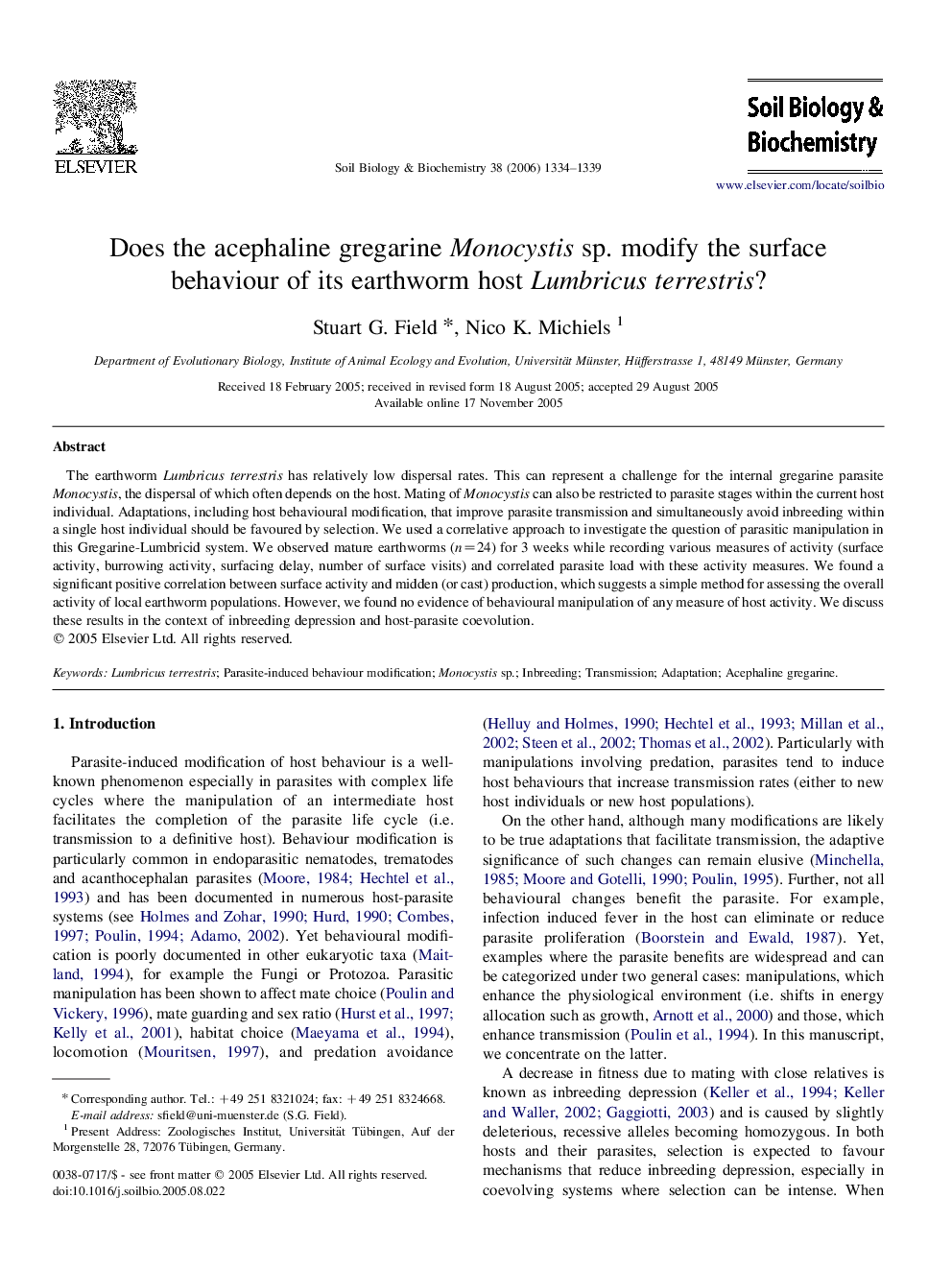| کد مقاله | کد نشریه | سال انتشار | مقاله انگلیسی | نسخه تمام متن |
|---|---|---|---|---|
| 2026656 | 1070036 | 2006 | 6 صفحه PDF | دانلود رایگان |

The earthworm Lumbricus terrestris has relatively low dispersal rates. This can represent a challenge for the internal gregarine parasite Monocystis, the dispersal of which often depends on the host. Mating of Monocystis can also be restricted to parasite stages within the current host individual. Adaptations, including host behavioural modification, that improve parasite transmission and simultaneously avoid inbreeding within a single host individual should be favoured by selection. We used a correlative approach to investigate the question of parasitic manipulation in this Gregarine-Lumbricid system. We observed mature earthworms (n=24) for 3 weeks while recording various measures of activity (surface activity, burrowing activity, surfacing delay, number of surface visits) and correlated parasite load with these activity measures. We found a significant positive correlation between surface activity and midden (or cast) production, which suggests a simple method for assessing the overall activity of local earthworm populations. However, we found no evidence of behavioural manipulation of any measure of host activity. We discuss these results in the context of inbreeding depression and host-parasite coevolution.
Journal: Soil Biology and Biochemistry - Volume 38, Issue 6, June 2006, Pages 1334–1339